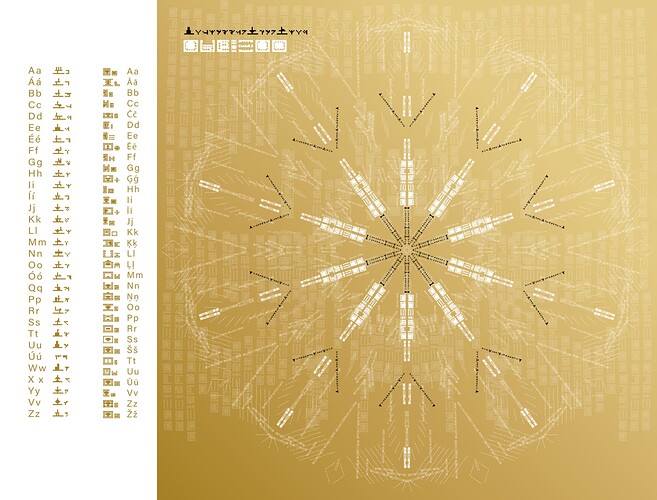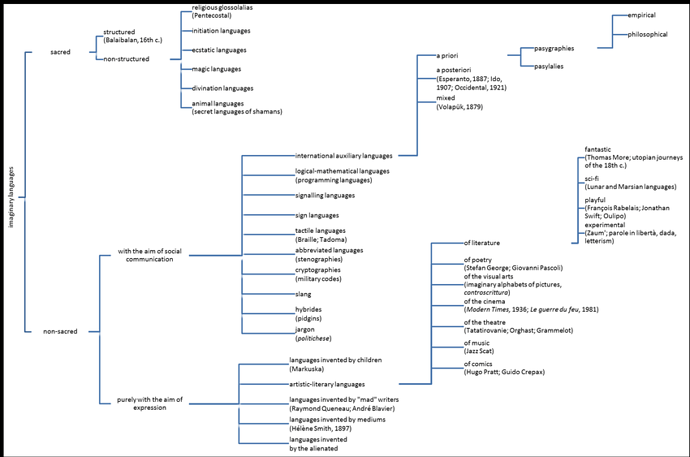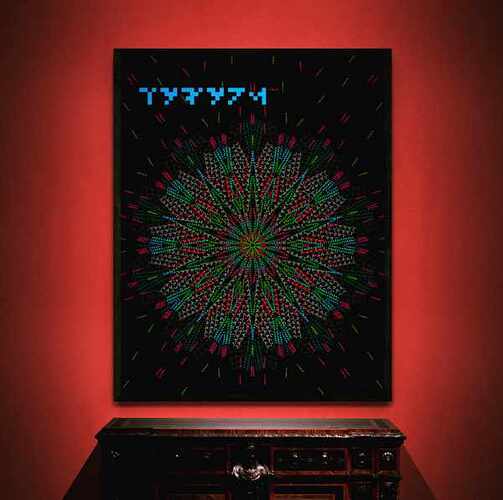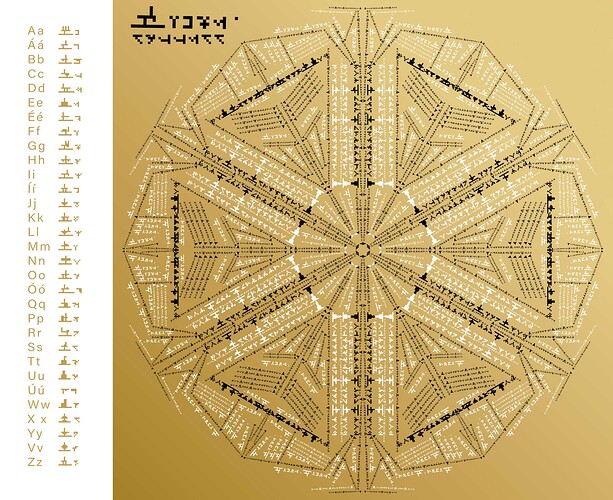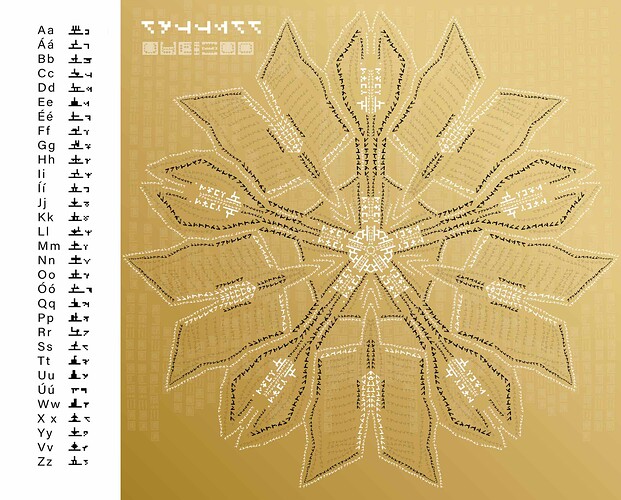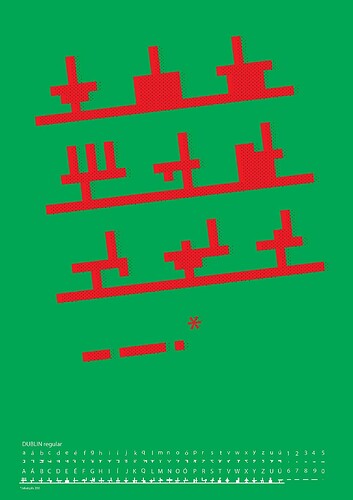Fictional alphabets (writing systems used in books, films, and computer games) or Imaginary alphabets in the field of visual arts are becoming more and more popular every next year. Thanks to my friend Georgios Diapoulis who drew my attention to the fact that > strudel.tidalcycles.org is now using a couple of these amazing fonts. I have been working with fictional alphabets since 2010 and basically, they are all meant for my circular compositions I have a couple of posters and another product of printed media translated into my own scripts. Seeing how JavaScript can “work” on a fictional alphabet was mind-blowing. I am currently writing my thesis about artist-invented writing systems and future perspectives. Are there any other futuristic perspectives for fictional or imaginary alphabets?
Hey Gundega,
good to see you here! I post here some of your works I posted on Strudel’s Discord channel. (well, only one as the platform says)
And I also want to share my experience with live coding using the new fonts.
The experience of writing without the ability to read the written text is a defamiliarisation for the user.
Maybe this article is relevant here: Designing interaction for designers | Proceedings of the 9th ACM Conference on Creativity & Cognition
Best,
Georgios
Hi, thanks for the article: "…defamiliarization as a disorientation technique used to actively engage users, provoking innovative interaction experiences… " happy to see that there are some movements in this direction. Although it is not new, I think product design in general uses similar concepts all the time, but I have not seen any similar articles until now. Thanks for dl.acm.org link too. All the best. G.
Lovely topic and amazing images, thanks for sharing!
(Sorry the forum defaults are a bit strict, you should be able to post multiple images now)
Reading your bio @gundega.strautmane, it’s super interesting that you have worked with Braille, which I guess is also an invented alphabet. This reminds me of Hangul, the beautiful alphabet used in Korea that was invented in the 15th century. I understand is easy to learn, partly because some of the shapes are based on positions of tongue and teeth needed to make the sound.
@lukexi and I are exploring making alphabets together as well, early days and I’m tied up this week but will find some time to share some thoughts soon!
Thank you, Alex, yes, the writing systems are amazing, (https://www.worldswritingsystems.org) would be my place of inspiration. Pronunciation is another area that fascinates me. When it comes to language - Chinese, Japanese, and Corea have one of the most colorful traditions. Looking forward to hearing from you soon. Gundega
P.S. About Braille and all types of artificial languages, Albani &Buonorotti 1994 artificial language classification are describing and categorizes so many types of languages. Even programming languages.
Thanks this is a very interesting classification! I found the book here and am looking forward to reading it: https://www.researchgate.net/publication/316439183_Inventing_languages_inventing_worlds_Towards_a_linguistic_worldview_for_artificial_languages
It brings many questions to mind though, e.g.
- what’s the difference between ‘social communication’ and ‘pure expression’? Isn’t expression intrinsic to social communication?
- what’s the difference between an invented and a natural language?
Are all languages invented, and we call something ‘natural’ just because it was invented a long time ago? Or does ‘invented’ imply a particular intentional design process?
I would say for example than a sign language emerges and develops ‘naturally’ from any community that has a large number of deaf/Deaf members, e.g. due to a genetic condition.
I also find it interesting how languages can move between categories. For example the ‘esoteric language’ called Befunge was made for fun as a useless language, but a similar language Orca has turned out to be really useful for making music.
The term to look out for, I suppose, is ‘Asemic writing’.
There is a wikipedia page for it but sadly the key resource (Tim Gaze’s asemic.net) seems to be no longer available.
What I liked about its that it created links between artists often not considered together: Micheaux, Gysin, surrealism, dada, Chinese calligraphy, medieval crackpots, etc.
Gaze used to do a zine, of which I found an online copy here:
Fascinating stuff in this thread. The references are momentous, I’d love to find more time to explore this field in depth ! I find the application of fictional alphabets extremely relevant toward a study of what “realism” means when it comes to video game worlds, often mixing science-fiction and pseudo-archaeology, i.e. Zelda Breath of the Wild. In games, more than in movies imho, imagined alphabets add more than a flavor, but less than an informational layer : what kind of realism do fictional languages provide ? What are their unique affordances ?
Responding to @yaxu 's question " Are all languages invented, and we call something ‘natural’ just because it was invented a long time ago? Or does ‘invented’ imply a particular intentional design process?"
Essentially, I don’t think the notion of “intentional design” fits here. Let’s take the wikipedia definition of Befunge : " Befunge is a two-dimensional esoteric programming language invented in 1993 by Chris Pressey" - could we agree that fictional / invented languages are most often invented by one single individual, while “natural” languages emerge from unthinkably complex social / behavioral processes, which by definition can only happen over very long periods of time ? I agree the term “natural” conceals some kind of fantasy, especially because it compares linguistic processes to evolutionary dynamics. But “intentional design”, in the framework of evolution, becomes “intelligent design”, which is a way of using scientific knowledge to prove the existence of divine blueprints, etc. While “intentional design” per se could refer to the creation of languages by, say, script doctors (I think of the pre-pre-indo-european dialects invented by Dr. Andrew Byrd and Dr. Brenna Byrd from the University of Kentucky for the game Far Cry Primal), in many cases it seems to me that individuals are responsible for the creation of fictional languages (J. R. R. Tolkien invented Quenya/Elfin ; Ursula Le Guin invented Pravic ; Marc Okrand invented Klingon, etc…). Computer languages might be different, but my hunch is that there might often be a strong skeleton brought about by one individual (“artificially”?), which is later on expanded by a community (“naturally”?), i.e. John McCarthy’s Lisp, which carries a strong philosophical vision of what programming was to become. Sign languages are not only intentional, they are engineered to be efficient. I was amazed when I found out sign languages vary a lot ; they are highly localized.
You’ll find interesting that “esoteric (programming languages)” is translated as “(langages de programmation exotiques” in French, which to me underlines that this category just means “languages prized because they are rare” rather than what we think we know about Orphism or other ancient “esoteric” cults ; there, people could get killed for spreading “the word”, while “esoteric” languages are just harder to learn. In one case, it’s a matter of life and death, in the other, it’s a matter of love for knowlege at best, and boasting technicality at worst. Closing the loop with video games such as Sethian, making use of gnostic (very esoteric) fantasmagoria based on a fictional language ! It’s a fascinating puzzle game which only focuses on the decyphering of the fictional language. The game famously features an ancient (and/or) alien computer !
@Wilfriedhoujebek I’m discovering Tim Gaze’s asemic writing and loving it !
I have to underline that Henri Michaux explicitly / intentionally refers to Chinese character calligraphy, and he famously refused being a surrealist ; his work is rooted in the framework of post-dada, which means he certainly knew Gysin. I agree these things should be more often referenced together !!
Thanks, Alex, good point, yes if these fictional alphabets can be used, as I mentioned, in strudel.tidalcycles and in computer games, they are actually meant for social communication.
And you’re right “‘invented’ imply a particular intentional design process”.
In general artificial languages in the field of art, especially visual arts are usually created “with the aim of self-expression”. In my thesis “Artistic Experimentation with Imaginary Languages and Codes”, chapter ‘expert interviews’ one of my questions to Joseph Tabbi, a US literary scholar, and theorist, was about fictional codes in the field of visual arts and do we need new terminology, he surprised me by telling that this type of “languages” is waste of time and shouldn’t be created at all. That this is could be some new Avantgadre art forms, but rather useless. I tried to remind him that there is a difference between art and design.
Starting to comment on the next question from [Wilfriedhoujebek], there is a movement like “asemic writing”, ‘asemic’ means “having no specific semantic content”, this type of text art would be created “with the aim of self-expression” there is no way that it could be used as a social communication tool.
Thanks, yes the term is asemic, but if asemic means “having no specific semantic content”, in the case of fictional alphabets, there is semantic content. In my thesis, I am discussing a new term in the field of text art “Codification art”.
I agree that my circular compositions where text is not readable are quite asemic.
Still constricting my response to games :
-in Sethian, there definitely is semantic content, generating intelligent riddles and puzzles
-in Zelda, I’m not 100% sure but i would say there is no semantic content.
With only these two examples, it seems one cannot generalize. However, i would argue that the ornamentality of fictional alphabetical symbols, whether apparently deprived of semantic content or not, conveys something which (1) is not aiming at self expression and (2) is used as social communication tool, insofar as it strengthens the overall narrative in the diegesis, wherein the player is not meant to understand the content but only to feel immersed in an alien culture.
Asemic writing in visual arts is only one “writing” form where there is no semantic content. In SciFi alphabets (fictional alphabets) you can definitley find some coded text.
it is not easy sometimes to understand who is who, becouse some asemic artists are playing with recognisable signs and symbols. For example , my good friend, latvian graphic designer, Raimonds Vindulis is fascinated by creating signs and symbols that does not mean anything.
I am a bit busy hosting a visiting researcher until next week (@autodios, who might have something to say about Andean textile alphabets) but just to jump in here… I haven’t heard of a sign language being ‘engineered’ before. As far as I know (and I am far from expert), they have not been designed, but have generally emerged despite mainstream pedagogical thinking, through at times quite brutal oppression. I just don’t get the argument that such communication systems somehow hold less linguistic or cultural value because they aren’t ancient. To me, sign languages show this to be demonstrably false as they are clearly first class, recognised as such in law, and hosting culture as vibrant and complex as any other.
It’s true that Befunge has a single author, but there are many varieties based on this idea, and when I asked the author of Orca about it (Devine) they said they had heard of Befunge before, but wasn’t conscious of it when they were first making Orca… So these ideas have their own life in living memory. Further a language is much more than its rules, and despite creating Orca many years ago, even Devine says that they still are learning how to use it, and I expect still seeing surprising things in how others are using. It’s one thing making some language rules, and another making a language as a cultural practice around it.
edit Basically I guess it’s good not to respect our contemporary obsession in assigning authors to ideas too much!
I find this kind of strange, almost angry response fascinating @gundega.strautmane! I shouldn’t presume too much, but I think it often comes from single-disciplinary thinking, where people are very comfortable about their place in the disciplinary hierarchy they are part of, and deeply uncomfortable about the thought of new doors opening…
All understood, much room for thinking here ! About sign language, please don’t get me wrong ; the amazing complexity, full expressivity and incredible life is not in question from my (admittedly limited!) perspective. The formalized and legally integrated aspect has a history though, and great individuals have contributed to addressing the necessity of engineering (official) consistent education methods and implementing them as much as possible, fighting for the rights of people who were not always understood or cared for as much as they deserved. Sorry about the misunderstanding!
I’ve just learned of Kaktovik numerals:
Really interesting properties!
Kaktovik numerals are really interesting!
Materials from a lovely looking course “Computational Letterforms and Layout” by Allison Parish:
Found via their fediverse feed:
I’ve just found out about Golan Levin’s Alphabet Synthesis Machine. Interesting !
